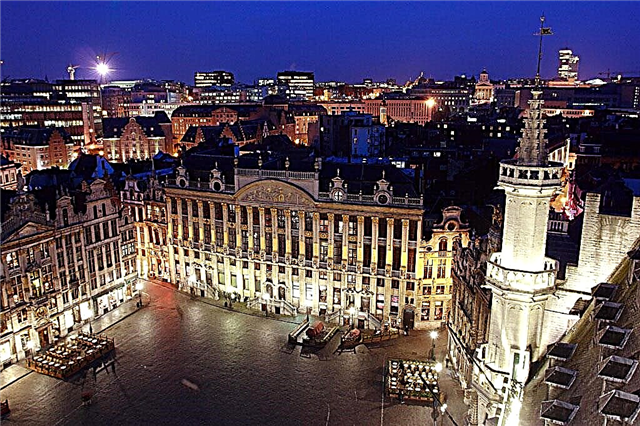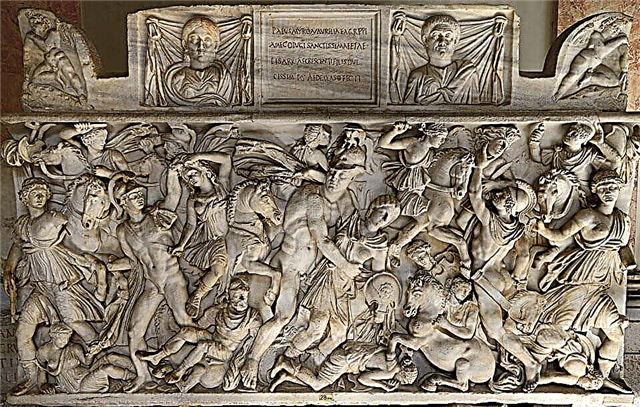Over the seven centuries of its existence, Warsaw has experienced several conquests and destruction. The entire historic city center was razed to the ground during World War II. For decades, restorers have painstakingly studied documents, old engravings and photographs, and literally bricked up the capital of Poland from ruins.
As a shining example of restoration, the historic center with its squares, castles and churches was included in the UNESCO heritage list. Nowadays, a tourist, walking along the Market Square and contemplating the powerful royal castle, will hardly guess that these attractions are only a few decades old.

The best hotels and hotels at affordable prices.
from 500 rubles / day
What to see and where to go in Warsaw?
The most interesting and beautiful places for walking. Photos and a short description.
Old city
Historical center of the city. In the 13th century, the first stone of the future Polish capital was laid here. Life around the Old Town has been in full swing for centuries - merchants gathered at fairs, wandering artists staged street performances, crowds of onlookers gathered to gawk at bonfires where witches and sorcerers were burned. Almost nothing has survived from the historical buildings, only the basements and basements, but this does not make the Old Town lose its charm.

Wilanow Palace
The palace is 10 km away. from the Polish capital. It was erected in the 17th century for King Jan Sobieski and his wife Maria Casimira Louise. At the request of the queen, during the construction, the creators were guided by the French architectural school (the Baroque style prevails). At the beginning of the 19th century, one of the first art museums in Poland was opened on the territory. During the Nazi occupation, the museum's collections were looted, but then they were returned back to Poland.

The Royal Castle
An architectural and cultural monument in the center of Warsaw, erected in the 16th-17th centuries by the Lithuanian prince Sigismund. During the Northern War, the castle was plundered by the Swedes and gradually fell into disrepair. It is noteworthy that in 1829 the Russian emperor Nicholas I was married here to the kingdom of Poland (at that time the Rzeczpospolita was part of the Russian Empire). The modern Royal Castle is a copy of a building blown up by the Nazis during World War II.

Castle Square
The central square of Warsaw, surrounded by the main attractions. Located within the Old Town. In the center of the square there is a memorial column in honor of King Sigismund III Vasa. From the Castle Square begins the Royal Route, which leads to the country residence of Jan III. In the Middle Ages, this place was the concentration of city life, all the main events took place here.

Market Square
Another central square, surrounded by houses with multi-colored plaster. Each building is unique, each facade has a different pattern and colors. The Market Square has been the trade pulse of Warsaw in the past. It was always crowded, lively and fun. Taking a leisurely stroll through this place, you can feel the real atmosphere of the Middle Ages.

Warsaw barbican
A powerful fortress structure of the 16th century in the system of fortifications of the Old City, built according to the design of the Italian master D. Batista. The building did not perform defensive functions. At the base of the barbican tower there is a monument to the Siren. According to legend, in ancient times, the Siren emerged from the river and informed people that a great city would soon appear on the banks. Today, an exhibition gallery is located on the territory of the fort.

Warsaw Citadel
Russian fortress of the XIX century, built by order of the imperial authorities after the November Uprising. It housed a prison for political prisoners and rebels. Important historical milestones of the Polish national liberation movement are associated with the fortress. After the occupation of Poland in 1915, the citadel passed into the hands of the Germans. But they were expelled in 1918. The fortress went to the newly formed Polish independent state.

Monument to the Warsaw Uprising
A monument commemorating the fallen Polish patriots during the 1944 Warsaw Uprising. It was officially opened in 1989 on the very spot where the freedom fighters were hiding from the German invaders. The composition depicts two groups of rebels, who seem to rise from the ruins and courageously rush into battle. The monument is one of the most interesting and visited monuments in Warsaw.

Church of St. John the Baptist
The Polish name of the temple is St. John's Church. This is the oldest Catholic church in the capital, which was built in the XII-XIV centuries. Over the centuries, important events have taken place here: coronations, the conclusion of peace treaties, the magnificent funerals of monarchs. The church played the role of the spiritual center of the Polish state. The modern building of the temple is a remake, as the historical building was demolished during the German occupation.

Church of the Holy Cross
Church of the XVI century, which also could not escape the fate of being destroyed in the Second World War. In the middle of the 19th century, a statue of Jesus carrying the cross stood in front of the temple. The church is notable for the fact that in one of its walls there is an urn with the ashes of Frederic Chopin. In the XX century, the temple was completely rebuilt, but work on the external and internal decoration continued in the XXI century.

St. Casimir's Church
The temple was founded by the ruler Jan III and his wife in the 17th century at their own expense. Inside is the tomb of the Polish princess, daughter of Jan III. The church was built in the style of classicism and baroque with strict observance of geometric proportions according to the project of the architect T. Hamerski. After the bombing, only the 17th century garden has survived. The temple was rebuilt in the middle of the 20th century.

St. Anne's Church
The current cathedral, which arose thanks to the generous funding of Princess Anna Radziwill. Inside the church, her remains are buried. Due to numerous reconstructions, a single style is not traced in the architectural composition, a mixture of elements from different eras prevails. The church bell tower is used as an observation deck. According to legend, if a young couple get married in St. Anne's Church, the marriage will be long and prosperous.

Frederic Chopin Museum
Frederic Chopin is a famous Polish composer, whose creative path was associated with Warsaw. The museum exposition consists of items belonging to the musician. In addition to letters, musical scores and personal belongings, you can see the grand piano at which the master worked. In addition to the traditional exhibition, there is a multimedia exposition where you can learn about the details of Chopin's biography.

Maria Sklodowska-Curie Museum
Museum dedicated to the research and life of the famous woman physicist Maria Sklodowska-Curie. Thanks to her research, the table of chemical elements was replenished with two new elements - polonium and radium. The name "polonium" was given to the substance in honor of the motherland of the scientist - Poland. Maria has been awarded the Nobel Prize twice. The museum was organized in 1967 through the efforts of her daughter Eva Curie.

Polish Army Museum
Museum dedicated to the Polish Armed Forces. The exposition covers the period from the emergence of the Polish state to the present day. The open-air exhibition presents samples of weapons from other countries: artillery pieces, tanks, fighters, armored vehicles. Inside there are collections of medieval weapons, armor, banners. The museum contains the cocked hat and saddle of Napoleon Bonaparte.

Copernicus Science Center
An interactive scientific museum, where visitors are invited to experiment on their own.It is one of the most advanced of its kind in Europe. The inner space is divided into several thematic zones that tell about entire layers of human knowledge. The first permanent exhibition was launched in 2010, and within 1.5 years the museum was visited by about 2 million people.

Palace of Culture and Science
A high-rise building, almost an exact copy of the Stalinist skyscrapers in Moscow. It was erected by the Russian architect L. Rudnev by order of I.V. Stalin, who thus wanted to make a gift to the Polish people. It houses offices, cinemas, a large conference hall, museums and exhibition galleries. The spire of the building dominates all buildings in Warsaw and serves as a reference point for tourists who do not know the city.

Ujazdowski castle
The former residence of the Saxon Elector and King Augustus II, an exact replica of a 17th century building that was destroyed during World War II. Since 1975, the castle began to be restored from the very foundation; in 1981, the Center for Contemporary Art was opened on its territory. Nowadays, the Ujazdowski Castle has become a platform for numerous creative festivals, author films, art salons and photo exhibitions.

Lazienki Palace
Another former residence of the Elector Augustus II the Strong. This majestic and picturesque building was called the "palace by the water", as its base is set right on the surface of the river. The palace complex consists of the main building, baths, White House with galleries and pavilions. An art gallery is located inside the main building, where more than 2 thousand paintings are exhibited.

Lazienki
A picturesque quiet park surrounding the Lazienki Palace. It was created as a nature reserve, but eventually became a public square. From the beginning of the 19th century, all people were allowed to enter the territory. There is a monument to F. Chopin in the park - a copy of the 1926 monument, which was destroyed by the Nazis. It is pleasant to walk along the well-groomed park alleys and paths on a fine summer day.












